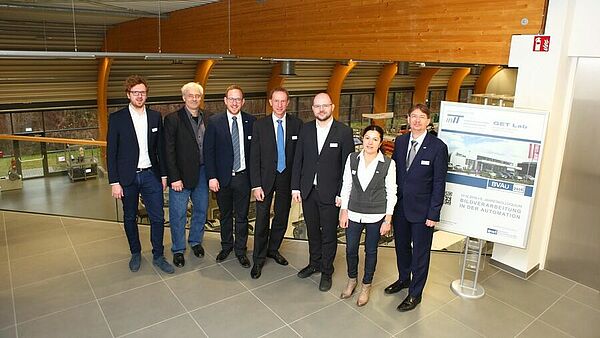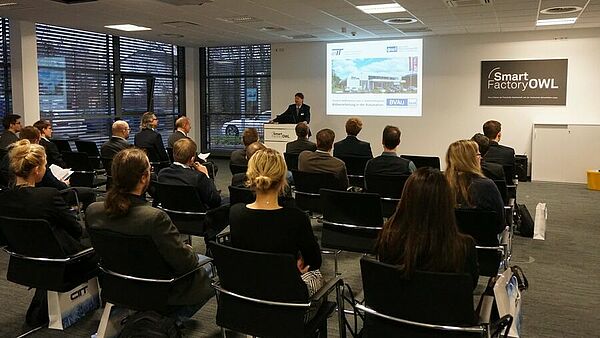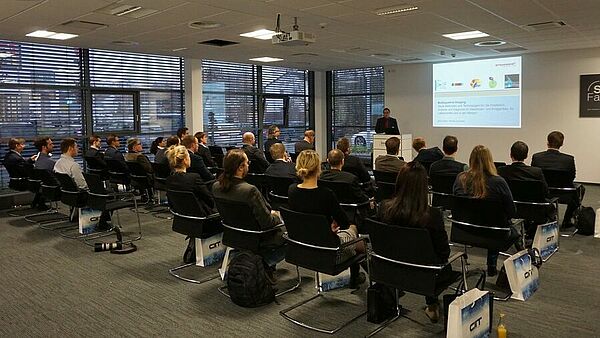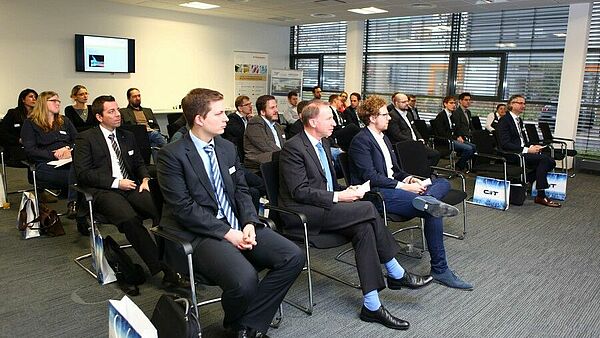Together with the GET Lab of Paderborn University inIT organized the annual colloquium BVAU already for the fifth time. It alternatingly takes place in Lemgo and Paderborn. A thematic focus was set on industrial image processing systems with multispectral analysis and diagnosis, technical aspects of image processing, methods of image processing and pattern recognition for real-time systems as well as their areas of application.
The colloquium is a platform for industry and science that covers an important field of Automation. Industrial Image Processing and Pattern Recognition is a key technology for the products of the future. It is also the basis for intelligent quality assurance systems in manufacturing companies. Interdisciplinary approaches from technics, biology and psychology make possible forward-looking solutions. Because of the increased use of image processing technologies new possibilities are created in a rapid speed. But there are also challenges that have to be faced with regards to Industry 4.0 approaches. “It can be seen that distributed Image Processing constantly plays a bigger role. In a few years multi and hyperspectral imaging achieves initial successes and will be used in the field of food technology and medical technology” explains Professor Volker Lohweg (Conference Leader and Board Member of inIT).
Bernd Stöber (Stemmer Imaging GmbH) opened the conference with a key note speech about “Multispectral Imaging. New methods and technologies for inspection, analysis and diagnosis in the field of machine and plant engineering, for foodstuff and medicine”. In following sessions and talks experts exchanged ideas and opinions about latest developments. “There were vivid discussions about latest research topics and their implementation potentials”, resumed Lohweg.
The high significance of this conference is confirmed by growing number of participants and the quality of the conference contributions. “Contents were widely spread, the quality of the contributions and the presentations was consistently high”, so Lohweg. “There was an excellent mixture of business and science. The conference underlines once again the guiding principle of the Science to Business Center CENTRUM INDUSTRIAL IT (CIIT) where inIT is located. The scientific exchange among colleagues was a positive value for the participants.”
Research Focus at inIT:>
Industrial Image Processing and Pattern Recognition becomes more and more established as a key technology in manufacturing companies. In the context of a quality assurance strategy companies use Industrial Image Processing for optical production measurement technology, system and product inspection as well as human-machine-interaction. inIT focuses on the competence area real time image processing with the use of interdisciplinary approaches of technics, biology and perception psychology. Industrial Image Processing has the goal to process image information from automation systems under the criteria of process real time, robustness, and resource constraints. According to a holistic approach image data is used as a source of information as well as expert knowledge.
Further Information: http://www.hs-owl.de/init/bvau2016/





